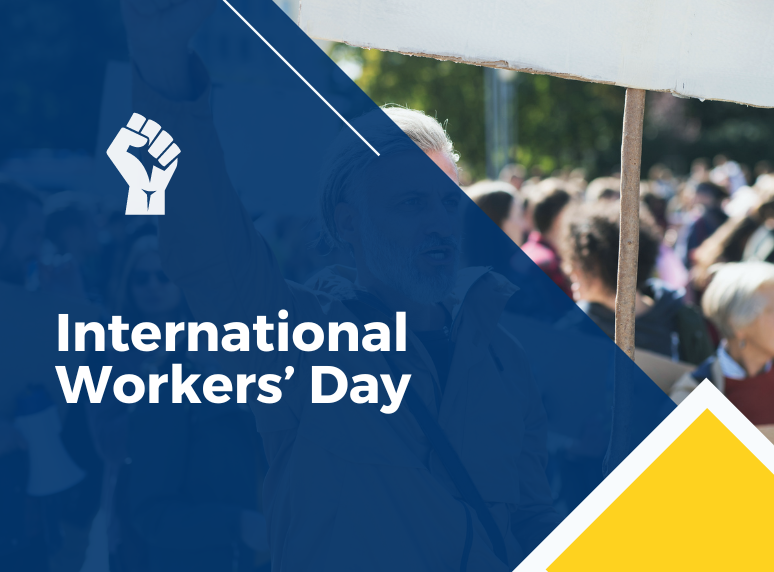May 1, also known as “May Day” or International Workers’ Day, is important in the United States’ labor history. This date commemorates the 1886 Haymarket Affair in Chicago, where workers fought violently with authorities to win the right to an eight-hour workday. Today, the eight-hour workday is a common benefit that is often taken for granted, but it was once fought for by workers who faced poor working conditions and long hours.
This also commemorates the first attempts for labor unions in the United States to try to provide labor right for employees. In the early 19th century, during a time when workers had little to no protection from exploitative employers. These early unions were often met with fierce opposition from business owners and government officials, who viewed them as a threat to the established order.
The Sad History of the International Workers’ Day
The Haymarket affair and subsequent events that led to May Day were not intended to become part of labor history. In 1886, about 200,000 US workmen launched a nationwide strike for an eight-hour day, and it became known as the Haymarket affair when workers in Chicago led major union demonstrations on May 1 in support of the cause.
The Chicago protests were part of several days of action, and a strike at the McCormick Reaper plant turned violent on May 3. The next day, a peaceful meeting at Haymarket Square became even more chaotic, leading to one of the most significant events in American labor history.
On the night of May 4, After the last speaker was finishing his talk. A delegation of 180 policemen marched from the station a block away to break up what remained of the meeting. The police captain ordered the meeting to disperse, the speaker cried out that it was a peaceable gathering, a bomb exploded in the police ranks. It wounded 67 policemen, of whom seven died. The police opened fire, killing several men and wounding 200, and the Haymarket Tragedy became a part of U. S. history.
Declaration of the International Workers’ Day
In 1889, the International Socialist Conference declared that May 1 would be an international holiday for labor in commemoration of the Haymarket affair, and it is now known as International Workers’ Day.
However, in the United States, May Day faced severe opposition during the anti-communist fervor of the early Cold War. In July of 1958, President Eisenhower signed a resolution naming May 1 “Loyalty Day” to avoid any hint of solidarity with the “workers of the world” on May Day. The resolution declared it would be “a special day for the reaffirmation of loyalty to the United States of America and for the recognition of the heritage of American freedom.” Despite the government’s attempts to suppress May Day, the labor movement in the United States continued to fight for better working conditions and worker rights. The Haymarket affair became a critical moment in the struggle for an eight-hour workday, and the legacy of the event remains relevant today.
The Rise of the American Federation of Labor
Despite this opposition, unions persisted and began to gain traction in the latter half of the 19th century. The National Labor Union, founded in 1866, was one of the first national unions in the United States. The Knights of Labor, founded in 1869, was another influential union that played a key role in the labor movement of the late 1800s.
In 1886, a group of craft unions formed the American Federation of Labor (AFL), which would become the largest and most influential labor organization in the United States for much of the 20th century. The AFL focused on improving working conditions and securing higher wages for skilled workers, and it was instrumental in the passage of laws that protected workers’ rights.
In Conclusion
May Day remains a crucial event for labor movements worldwide. It is an opportunity to reflect on workers’ rights and the progress made in securing better working conditions and fair compensation. Despite advancements in labor laws and worker protections, the fight for better working conditions and pay is ongoing, particularly in the United States.
In recent years, the COVID-19 pandemic has exposed the gaps in the US labor system, with essential workers facing hazardous working conditions, low pay, and limited protections.
Resources:
- The history of labor unions in the United States: “The Birth of Labor Unions in the United States” by John-Henry Doucette, published on History.com on May 1, 2021.
- The significance of May Day in the United States labor history: “May Day: A Short History of the International Workers’ Day” by Peter Linebaugh, published in Jacobin Magazine on May 1, 2015.
- The Haymarket Affair and the Origins of May Day: “The Haymarket Tragedy: A Watershed in the American Labor Movement” by William J. Adelman, published in the Illinois Labor History Society’s “The Journal of the Illinois State Historical Society” in 2001.
- The opposition to May Day in the United States during the Cold War era: “The Origins of ‘Loyalty Day’: Cold War Politics and National Identity in the United States, 1940-1955” by Richard Pells, published in “Diplomatic History” in 1983.
- The rise of the American Federation of Labor: “The American Federation of Labor: History, Politics, and Prospects” by James H. Stone, published by Holmes & Meier Publishers, Inc. in 1990.

